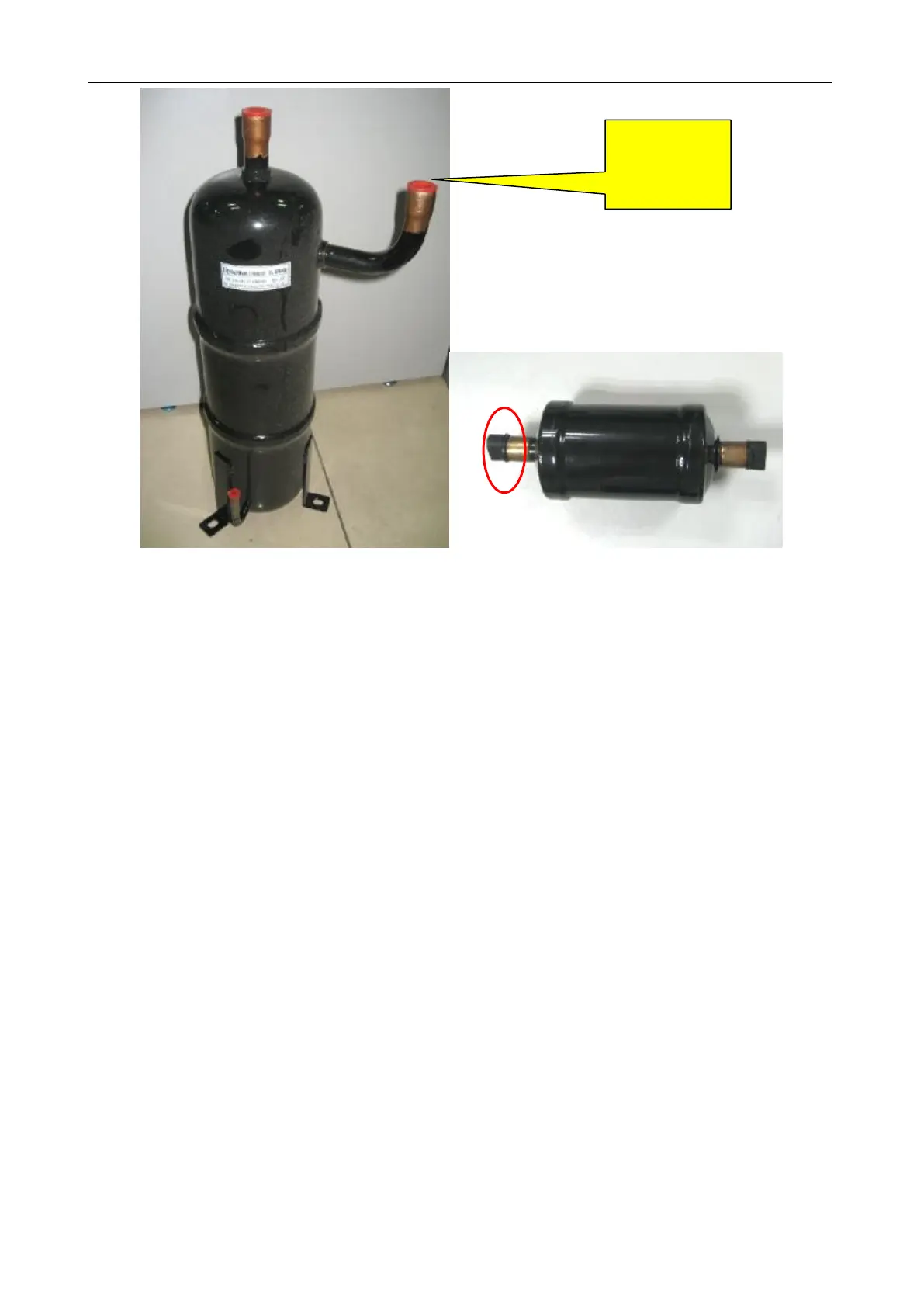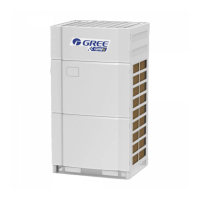GMV5 D.C INVERTER MULTI VRF SERVICE MANUAL
221
NOTE:
Compressor lubricant must be kept completely airtight. Hitachi compressors use special
lubricant FVC68D or FV-68H whose moisture absorption capability is high. Requirements on
air-tightness of these compressors are higher.
2) Prepare other materials.
a. Prepare nitrogen. Prepare enough nitrogen. They will be used during welding. Nitrogen pressure
should be 2.0 MPa (290psi) at least.
b. Prepare welding rods. In addition to ordinary welding rods, you should also prepare special
welding rods (containing 5% or more silver). Compressors‘ inlets and outlets are made of copper plated
steels, which require special welding rods and materials.
c. Prepare gases for welding. Oxygen and acetylene of proper amount should be determined with
consideration of actual welding positions. Try to finish the welding task once. Avoid repeated welding.
d. Prepare tools, including hexagon, diagonal pliers, combination pliers, needle nose pliers,
multimeter, pressure gauge, Phillips screwdriver, flathead screwdriver, wrenches (at least two), PVC
insulation tape, and tielines (multiple).
Step 8: Install a new gas/liquid separator.
NOTE:
If a faulty compressor needs replacement, the gas/liquid separator needs replacement as
well. This is to avoid abnormality from happening inside the gas separator, and affecting system safety
and reliability.
Put the gas/liquid separator on a chassis and connect the inlet pipe of the gas separator with the
outlet pipe. Then, connect the pipe to a nitrogen source. The nitrogen source can be connected based
on actual situation, for example, you can add a bypass interface or directly connect the nitrogen source
to the inlet/outlet pipe. If the pipe is big, cover it with tape as well. Make sure nitrogen can smoothly flow
through the gas separator.
The sealing
rubbers for
various parts
must be intact

